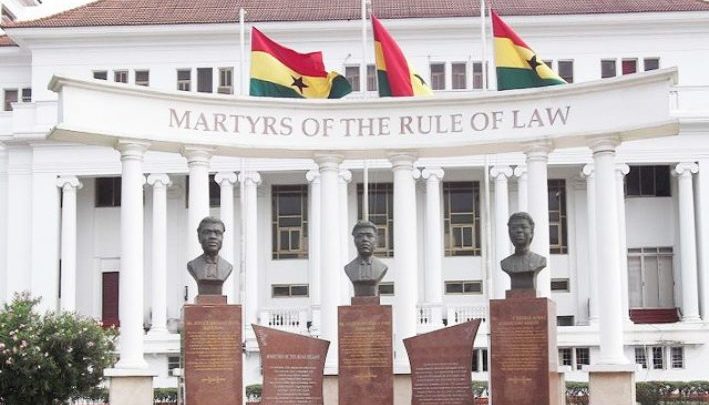
In almost all countries, the Judiciary is regarded as the third arm of government empowered by the constitution and the laws, and vested with the judicial power of the nation. It has the sole responsibility of interpreting the Constitution and laws, administering justice and providing other related services. The Judicial Service as a Public Service Institution is the organ responsible for the day to day administration of the Courts and Tribunals.
Famous American Chief Justice, John Marshal observed that “the judicial system comes home in its effects to every man’s fireside; it passes on his life, liberty, property and everything”.
The advent of the information revolution has made a turning point in the administration of justice. Terms such as e-Justice, e-Courts, Cyberjustice, Electronic Justice, and others have emerged to describe the role of IT in the judicial system.
Lord Woolf, in his report on the judicial system of the UK in 1996, noted that in order to bring about improvements in the justice system of the UK, IT was needed to play a key role. Indeed, he noted that IT ‘… is fundamental to the future of our civil justice system. IT will not only assist in streamlining and improving our existing systems and processes, it is also likely, in due course, itself to be a catalyst for radical change as well….This holds true for all judicial systems the world over.
The question is, how can information technology be used in the judicial system to bring about reform in the administration of justice.
First, it will help improve access to justice. It is often said that justice delayed is justice denied. In societies governed by the rule of law, gaining speedy access to the legal system is expected. The application of information technology in the judiciary can help improve access to justice by improving court procedures and practices, thereby minimizing delays.
Second, the use of information technology in the judiciary will promote the efficiency of judges and the courts. In most courtrooms today, proceedings are still written long hand by court clerks. In today’s computerized world, some courts have introduced audio-recording of courtroom proceedings. This makes it easier for judges to write courtroom briefs by making references to the audio recording anytime there is uncertainty in the records.
Third, the use of information technology within the judiciary will strengthen public trust and confidence. With the availability of mobile Internet and public WI-FI systems around the world, the public can have access to judgments of the courts if placed online. Copies of such judgments could be put on CDs and DVDs and made available to district court offices where the possibility of having access to the Internet may be limited.
Fourth, the use of information technology in the judiciary will facilitate the sharing of case information among judicial units while ensuring its availability to the public. With the availability of a number of mailing lists and internet relay chats dedicated to legal discussions, members who subscribe to these sites can always pose legal questions online with the expectation that somebody somewhere will respond to the issue. Additionally, with the availability of extensive legal reference materials online, trial lawyers and judges can access these sources to enable them improve upon the efficiency of their operations.
Fifth,
the use of information technology within the judiciary will facilitate electronic
filing of briefs, lawsuits, and judgments. People have a stereo-typed view
about the judiciary system being slow, rigid and not transparent. The use of
information technology in the courtroom can help change this impression and the
judiciary can became more open, transparent, efficient, fast, responsible and
user friendly.
Several IT applications could be implemented to transform the administration of justice. This range from simple technologies such as audio recording, audio and computer conferencing through more advanced technologies such as biometric identification, the creation of a court network system and a virtual courtroom environment.
For example, biometric profiles of the accused, sureties, witnesses and other court users can be kept in an online databank. The use of biometric readers can help identify the profile of criminals and accused persons. This can expose people who stand sureties for a number of accused with false identities. Similarly, a video conferencing system implemented will enable the courts to take information from dreaded criminals without transporting them from their jail to the courtroom. The technology can facilitate simultaneous trial of accused lodged in one jail.
Dictation capturing software could be used to save time and to expedite judgment writing. For example, Dragon Natural Speaking software is now widely used in most courtrooms in the West to capture spoken information. The used of Dictaphones could be adopted by the judiciary to process information. Also available is technology for fast scanning of court files. After scanning the files, OCR (Optical Character Recognition) software can be used to improve upon the quality of scanned documents. Wi-Fi networking is another technology that could be used in the courtroom. Judicial buildings should be established as Wi-Fi zones to facilitate Internet access without the hindrance of cables and wires.
Additionally, the availability and use of financial package software could assist in the calculation of court fee, fines and witness expenses. This could minimize corruption and waste in the judicial system. The system could be used to generate periodic financial statements for the judiciary.
At the district court level, touch screen technology could be employed to make judicial information available to people. This will reduce travel time for people who have to visit the courts to learn about the fate of their cases. Multipurpose community telecentres at villages could be used to carry this information. This is similar to the E-kiosks concept widely used in India to bring government information to grassroots people.
The implementation of information technology system in the courts should rely on the concerted efforts of all-judges, judiciary administrators, court users, system developers and information technology experts. Training is very critical to the success of any IT programme in the judicial system. There must be a comprehensive training needs analysis among judiciary employees to assess their IT training needs.
Change is always a threat to established order. But, change is inevitable in life. We need to change the mindset, habits and behaviour of those working in the judiciary who are used to standard operating procedures. Judicial workers should be made to appreciate how information technology can assist them in their work. It is also important to let administrative staff in the courts know how information technology can enable them to perform their duties and serve the court users better.
All in all, we need to move from a manual court system to an electronic court (e-court) system where there is less paper used in the courtroom, where most of the court proceedings will be based on audio-visuals and video, and where most trial lawyers and judges can make use of computers and electronic gadgets in the courtroom. This e-court and e-filing system already exist in some countries (the COURT 21 project is a good example), most European countries, and Australia.
Worldwide, tele-justice has emerged as a secure way of carrying out legal procedures. By installing a video conferencing system at the courthouse as well as the prison facility, defendants can participate in all legal procedures without law enforcement having to shoulder the dangers associated with jail-to-courthouse prisoner transport.
Video-conferencing also helps connect more than one courtroom during a trial, and enables the use of more than one application. The system provides a simple user interface, which allows non-technical users such as judges and court staff, to easily operate and maintain the judicial video conferencing system.
The use of information technology holds immense promise in the judicial system. The time to move in this direction is NOW.
Nana Prof. Osei Darkwa, President African Virtual Campus




